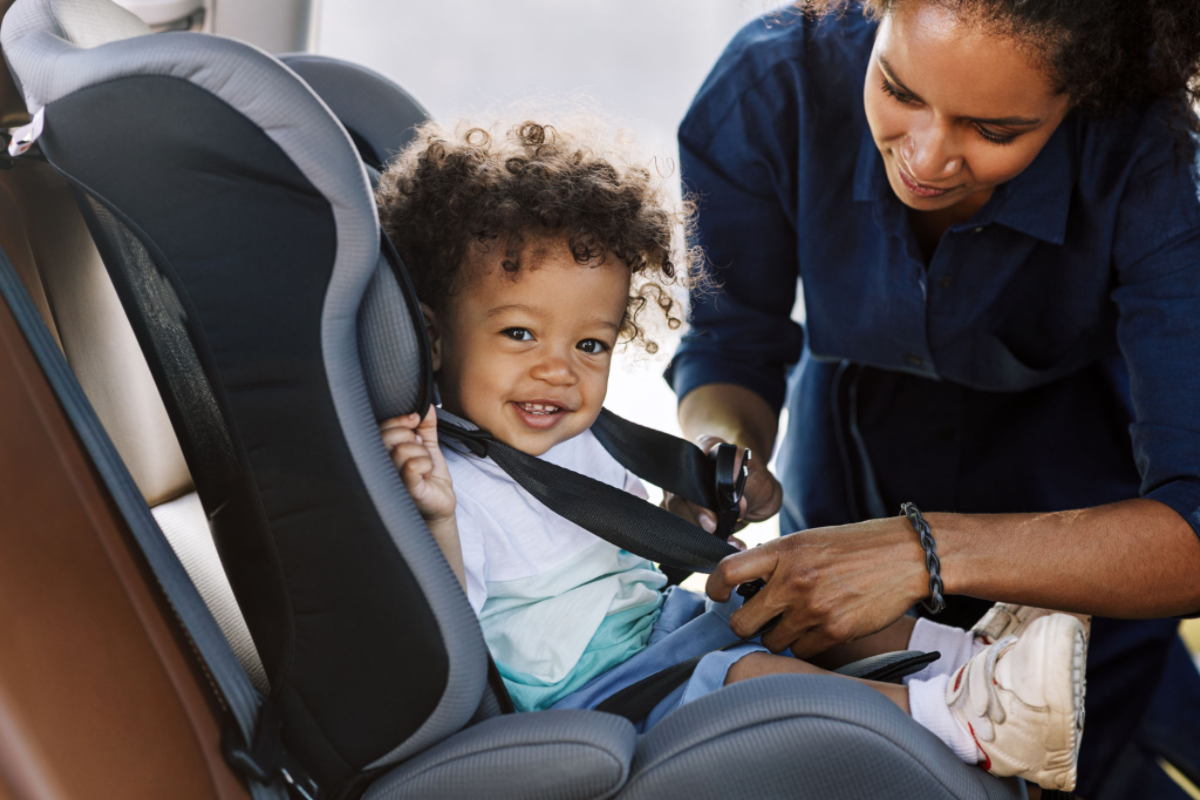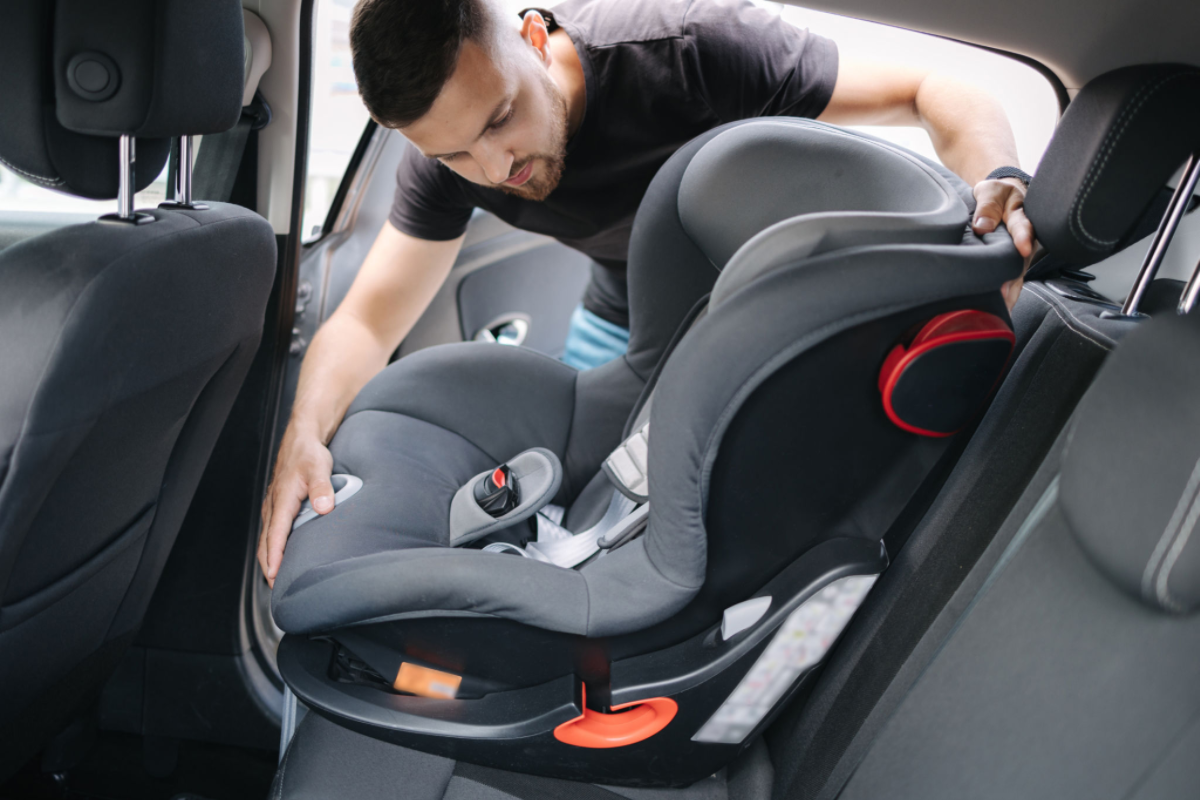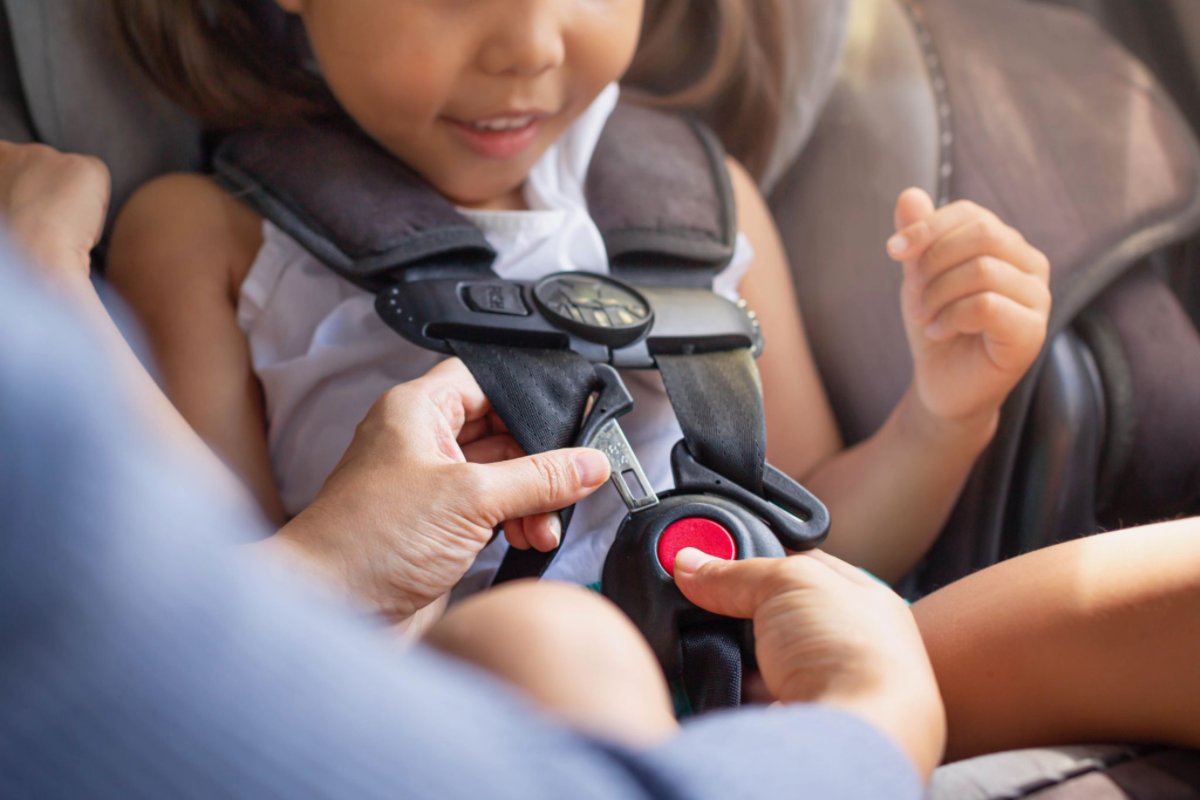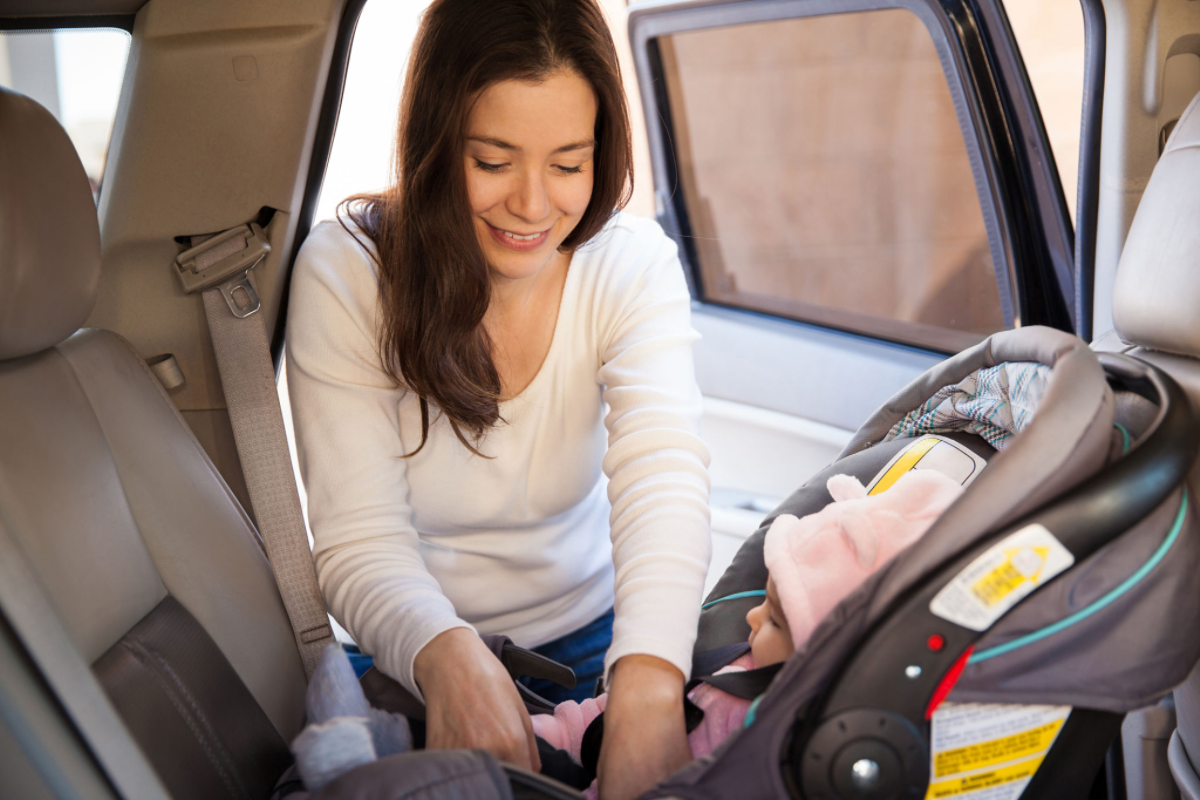Welcome to the Motherhood Center’s comprehensive guide to ensuring the safety of your precious little ones during every car ride. As parents and caregivers, your child’s safety is undoubtedly your top priority, and that’s why understanding the ins and outs of car seat safety is absolutely crucial. In this guide, we’ll walk you through everything you need to know about selecting, installing, and using car seats for infants and toddlers.
At the Motherhood Center, we’re committed to providing you with the most up-to-date and expert advice, so you can make informed decisions for your family. From newborns to growing toddlers, each developmental stage comes with its own set of considerations when it comes to car seat safety. Our guide will cover various types of car seats, guidelines for proper installation, essential safety practices, and even address common mistakes to avoid.
Your child’s journey from infancy to toddlerhood is marked by rapid growth and development, and your approach to car seat safety should evolve accordingly. Whether you’re a first-time parent or have a growing family, our goal is to empower you with knowledge that ensures your children ride in the safest and most secure manner possible.
So, let’s dive in and explore the world of car seat safety together. By the end of this guide, you’ll have the confidence and know-how to choose the right car seat for your child’s needs, install it correctly, and embark on every car journey with peace of mind. Your child’s safety is our priority, and this guide is here to support you every step of the way.
Understanding Car Seat Types
When it comes to car seat safety for infants and toddlers, it’s crucial to delve into the different types of car seats available. Every child’s journey from infancy to toddlerhood is unique, and selecting the right car seat type that matches their developmental stage is paramount for their safety and comfort. In this section, we’ll explore the two primary categories of car seats: infant car seats and convertible car seats.
Infant Car Seats
Rear-Facing Only: Infant car seats are meticulously engineered to cocoon your little one in a rear-facing position, which is considered the safest way for infants to travel. This design effectively cradles their delicate head, neck, and spine, distributing any crash forces evenly across their body in the event of an accident. Typically suitable for babies from birth up to around 1 year of age, these seats are a must-have for newborns.
Weight and Height Limits: It’s crucial to heed the weight and height limits specified by the manufacturer for infant car seats. As your baby grows and approaches these limits, it’s a sign that it’s time to transition to a different type of car seat that can accommodate their evolving needs.
Travel System Compatibility: Many infant car seats come with a brilliant added feature: compatibility with stroller frames. This innovative design allows you to effortlessly transfer your little one from the car to the stroller without disrupting their nap. Convenience meets safety in these travel system setups.
Convertible Car Seats
Extended Rear-Facing Option: Convertible car seats are engineered to grow with your child, providing extended rear-facing capabilities. This means they can accommodate infants as well as growing toddlers. With the ability to be used in a rear-facing position until your child reaches the maximum weight or height determined by the manufacturer, these seats offer enhanced safety during those formative years.
Transitioning to Forward-Facing: Once your child surpasses the rear-facing limits of the convertible seat, it can be reconfigured to face forward. However, it’s worth noting that the recommendation is to keep your child in the rear-facing position for as long as possible, as it offers a higher degree of protection.
Harness Adjustments: Convertible car seats offer the flexibility of adjustable harness heights and crotch strap positions. This ensures a snug and secure fit as your child grows. Always consult the seat’s manual to ensure these adjustments are made correctly.
Understanding the nuances of these car seat types lays a strong foundation for making informed decisions. As your child progresses through different stages, their car seat needs will change. The next section will delve into the process of selecting the right car seat based on your child’s age, size, budget considerations, and features that align with your family’s lifestyle.
Selecting the Right Car Seat
Choosing the right car seat for your child is a decision that requires careful consideration of various factors. As your child grows and their needs evolve, it’s essential to find a car seat that not only ensures their safety but also suits your family’s lifestyle and budget. In this section, we’ll walk you through the key aspects to keep in mind when selecting a car seat for your infant or toddler.
Age and Size Considerations
The age and size of your child play a pivotal role in determining the appropriate car seat type. Infant car seats, with their rear-facing design, are tailored for newborns up to around 1 year of age. On the other hand, convertible car seats offer extended usage, accommodating both infants and toddlers. Make sure to follow the manufacturer’s guidelines regarding weight and height limits to ensure the perfect fit for your child.
Budget and Features
Car seats come in a wide range of prices, and it’s important to establish a budget before you start shopping. While it’s tempting to opt for the latest and most feature-rich model, remember that all car seats available on the market meet stringent safety standards. Consider features that align with your family’s needs, such as easy installation, machine-washable covers, and additional padding.
Ease of Installation
Proper installation of the car seat is non-negotiable when it comes to safety. Look for car seats with straightforward installation procedures, clear instructions, and user-friendly mechanisms. Some car seats come with innovative installation systems, like the LATCH system (Lower Anchors and Tethers for Children), which simplifies the installation process and ensures a secure fit.
Reading User Reviews
User reviews are a goldmine of practical insights and real-world experiences. Before making your final decision, take the time to read reviews from parents who have already used the car seat you’re considering. Their feedback can provide valuable information about the seat’s comfort, durability, ease of use, and any potential drawbacks.
Selecting the right car seat is a crucial step in ensuring your child’s safety during car rides. By considering their age, size, budget, desired features, and user reviews, you’ll be well-equipped to make an informed choice that aligns with your family’s unique needs. In the next section, we’ll guide you through the critical process of properly installing your chosen car seat, ensuring maximum safety and peace of mind for every journey.
Proper Car Seat Installation
Ensuring your child’s car seat is properly installed is a paramount aspect of their safety while traveling. A securely installed car seat significantly reduces the risk of injury in the event of a collision. In this section, we’ll delve into the essential steps and considerations for correctly installing your chosen car seat.
LATCH System Installation
The LATCH system (Lower Anchors and Tethers for Children) is designed to simplify car seat installation. Most vehicles and car seats manufactured after 2002 are equipped with this system. It involves attaching the car seat to designated anchors in the vehicle, eliminating the need to use the seat belt for installation. Always refer to both your car seat’s manual and your vehicle’s manual for specific instructions on utilizing the LATCH system correctly.
Seat Belt Installation
If your vehicle doesn’t have the LATCH system or if you prefer using the seat belt for installation, it’s crucial to follow precise steps. Thread the seat belt through the appropriate path outlined in the car seat manual, ensuring it’s securely tightened to minimize any excess movement. The car seat should remain steady with minimal wiggle room once correctly installed.
Angle Adjustment for Newborns
For newborns and infants, achieving the correct recline angle is vital. Many car seats come with built-in angle indicators or adjustors to help you achieve the appropriate position. A correctly reclined seat ensures your baby’s airway remains open and unobstructed, reducing the risk of their head falling forward during the journey.
Harness Tightness and Placement
A snug harness is a key component of car seat safety. Straps should lie flat against your child’s body without twists, and the chest clip should be positioned at armpit level. The “pinch test” is a simple way to check if the harness is tight enough: you shouldn’t be able to pinch any slack between your fingers at the shoulder.
Proper car seat installation is a responsibility that can’t be taken lightly. Always consult the car seat manual for manufacturer-specific instructions, as each model may have unique installation requirements. The effort you invest in correctly installing the car seat will pay off in the form of your child’s safety and your peace of mind. In the next section, we’ll outline essential car seat safety guidelines that go beyond installation to ensure your child’s well-being on every car journey.
Essential Car Seat Safety Guidelines
While proper car seat installation is crucial, there are additional safety guidelines that parents and caregivers should be aware of to ensure the well-being of their infants and toddlers during every car ride. These guidelines go beyond installation and address important considerations that contribute to a safe and secure journey.
Rear-Facing Recommendations
It’s recommended to keep your child in a rear-facing car seat for as long as possible, following the guidelines provided by the car seat manufacturer. Rear-facing positions offer optimal protection for your child’s head, neck, and spine, distributing crash forces across their entire body. Many convertible car seats allow for extended rear-facing use, offering enhanced safety during their early years.
Avoiding Bulky Clothing
Bulky clothing, such as winter coats and snowsuits, can interfere with the snugness of the harness straps. When strapping your child into the car seat, remove any thick layers to ensure the harness fits closely against their body. You can place a blanket over them once they are securely strapped in.
Positioning of Straps and Chest Clip
Ensure the harness straps lie flat against your child’s body and are threaded through the correct slots at or just below their shoulders. The chest clip should be fastened at armpit level. Proper strap placement prevents your child from slipping out of the harness in the event of a collision.
Regular Car Seat Check-Ups
Perform routine checks on your child’s car seat to ensure it remains secure and properly installed. Before every journey, give the seat a firm shake to check for excessive movement. Make sure the harness is snug and the chest clip is properly positioned. Regular inspections help catch any issues before they compromise your child’s safety.
By adhering to these essential car seat safety guidelines, you’re taking proactive steps to protect your child during car rides. The combination of proper installation, rear-facing positioning, appropriate clothing, and consistent checks ensures a comprehensive approach to their safety. In the next section, we’ll guide you through safe travel practices when using car seats, whether you’re flying or simply heading out on the road.
Traveling Safely with Car Seats
As a parent, you understand that life with a little one involves both local trips and grand adventures. Whether you’re planning a cross-country road trip or a flight across the country, ensuring your child’s safety during travel is of utmost importance. In this section, we’ll explore safe travel practices when using car seats, both in airplanes and rental cars, as well as how to seamlessly integrate car seats with strollers for convenience and peace of mind.
Air Travel Guidelines
When traveling by air, it’s essential to know the guidelines for using car seats on airplanes. Many airlines allow you to use an FAA-approved car seat on board, either in your child’s purchased seat or as a carry-on item. This offers your child the same level of protection they would have in a car. Check with your airline in advance to confirm their specific regulations and ensure your car seat is approved for air travel.
Renting Car Seats at Destinations
Renting a car at your destination? While it might be tempting to rely on rental car seats, it’s important to remember that the safety history of these seats is unknown. Whenever possible, bring your child’s car seat from home. If this isn’t feasible, research reputable car rental companies that provide well-maintained, age-appropriate car seats for your child’s safety.
Securing Car Seats in Rental Cars
Properly installing a car seat in a rental car is just as vital as in your own vehicle. If the rental car has the LATCH system, you can utilize it as you would in your car. If not, the seat belt installation method remains a reliable option. Always consult both the car seat and rental car manuals for instructions specific to your situation.
Using Car Seats with Strollers
Travel systems that combine car seats and strollers offer a seamless transition between car rides and strolls. These systems allow you to move your child from the car to the stroller without waking them up. Ensure the car seat clicks securely into the stroller frame and that all safety mechanisms are engaged.
Traveling with a car seat requires extra planning, but it’s a small price to pay for your child’s safety. By following air travel guidelines, considering the safety of rental car seats, securing car seats in rental cars properly, and utilizing travel systems, you can ensure a smooth and secure travel experience for your little one.
As you prepare for your family’s next adventure, remember that your child’s safety is paramount. By implementing these travel safety practices, you’re providing the foundation for a journey filled with joy and cherished memories. In the upcoming section, we’ll discuss the appropriate timing for transitioning your child from one type of car seat to another as they continue to grow.
When to Transition Car Seats
Just as your child reaches various developmental milestones, their car seat needs also evolve. Knowing when to transition from one type of car seat to another is crucial for their safety and comfort. In this section, we’ll guide you through the key considerations and signs that indicate it’s time to make the transition.
Height and Weight Limits
Car seat manufacturers provide specific height and weight limits for each seat model. These limits are not mere suggestions; they are designed to ensure the seat’s optimal performance during a collision. Once your child exceeds these limits, it’s time to transition to a seat that accommodates their new size.
Signs of Outgrowing a Seat
Apart from reaching the height and weight limits, there are visual cues that suggest your child has outgrown their current car seat. If their head is less than an inch from the top of the seat, their shoulders are above the top harness slots, or their ears are above the top of the seat shell, it’s time to consider a larger seat.
Moving from Rear-Facing to Forward-Facing
For convertible car seats, transitioning from rear-facing to forward-facing is a significant step. However, experts recommend keeping your child in the rear-facing position for as long as possible. Only make the switch when they’ve outgrown the rear-facing limits of their current seat. Rear-facing offers more protection for their head, neck, and spine.
Transitioning to Booster Seats
Booster seats are the next stage in car seat progression. These seats are designed for older children who have outgrown their forward-facing car seats but are not yet ready for the adult seat belt. Typically, children should transition to a booster seat when they’ve reached the height and weight requirements of their current forward-facing seat.
Navigating the transitions between car seat stages can be a bit complex, but it’s a critical aspect of your child’s safety journey. Always consult the manufacturer’s guidelines and adhere to best practices recommended by safety organizations. By recognizing the signs and following the appropriate timelines, you’re ensuring that your child continues to ride safely as they grow. In the next section, we’ll discuss common mistakes to avoid to guarantee the effectiveness of your child’s car seat.
Common Mistakes to Avoid
As parents and caregivers, your dedication to your child’s safety is unwavering. However, even with the best intentions, there are common mistakes that can inadvertently compromise the effectiveness of your child’s car seat. By being aware of these pitfalls, you can take proactive steps to ensure your child’s safety during every car ride.
Loose Harness Straps
One of the most common mistakes is leaving the harness straps too loose. Straps should fit snugly against your child’s body, with no room for them to slip their arms out. Perform the “pinch test” – if you can pinch a fold in the strap at their shoulder, it’s too loose. Adjust the harness so it lies flat against the body.
Incorrect Harness Height
As your child grows, the harness height should be adjusted accordingly. Straps should be at or just below their shoulders for rear-facing seats and at or just above their shoulders for forward-facing seats. Ensure the chest clip is positioned at armpit level to keep the harness in place.
Improper Angle of Car Seat
For rear-facing seats, the correct angle is crucial. The car seat should recline at an angle that allows your baby’s head to stay back, preventing their chin from touching their chest. Many car seats come with angle indicators or adjustors to help you achieve the proper recline.
Using Expired Car Seats
Car seats have an expiration date for a reason. The materials and structure of the seat can degrade over time, affecting its performance during a collision. Check the label on your car seat for the expiration date and replace it if it’s past its prime.
Non-Compliance with Guidelines
It’s crucial to follow the guidelines provided by both the car seat manufacturer and safety organizations. This includes adhering to height, weight, and age limits for each seat type, as well as following installation instructions meticulously.
Avoiding these common mistakes requires vigilance and attention to detail. By double-checking the harness snugness, adjusting harness height, ensuring the correct angle, using non-expired seats, and adhering to guidelines, you’re prioritizing your child’s safety during every car ride. In the next section, we’ll explore how to care for and maintain your child’s car seat, ensuring its longevity and effectiveness.
Car Seat Care and Maintenance
Caring for your child’s car seat goes beyond ensuring their immediate safety – it also contributes to the seat’s longevity and continued effectiveness. Regular maintenance and proper cleaning not only keep the seat in optimal condition but also provide a hygienic and comfortable environment for your little one. In this section, we’ll cover essential tips for maintaining and caring for your child’s car seat.
Cleaning and Washing
Accidents, spills, and crumbs are part of life with children, making regular cleaning a necessity. Refer to the manufacturer’s instructions for cleaning guidelines specific to your car seat model. In general, use a mild detergent and warm water to wipe down the seat’s plastic and metal parts. For fabric covers, removable parts are often machine-washable on a gentle cycle. Be sure to let all parts air dry completely before reassembling the seat.
Inspecting for Wear and Tear
Regularly inspect your child’s car seat for signs of wear and tear. Check for fraying harness straps, cracks in the plastic, and any loose parts. If you notice any damage, consult the manufacturer’s guidelines to determine if replacement parts are available. Avoid using a car seat that shows significant wear, as it may not provide the necessary protection in case of a collision.
Replacement Parts Availability
Before purchasing a car seat, research the availability of replacement parts. Over time, components like harness straps, buckles, and padding may experience wear or damage. Knowing that you can easily obtain replacement parts ensures the seat’s continued safety and comfort.
Storing Car Seats Properly
If you’re not using the car seat for an extended period, such as with a second child or during storage, it’s important to store it properly. Keep the seat in a cool, dry place away from direct sunlight, as heat and sunlight can degrade the materials over time. Store the seat in its original box or a protective cover to prevent dust and dirt buildup.
By incorporating these care and maintenance practices into your routine, you’re investing in the safety and durability of your child’s car seat. Regular cleaning, thorough inspections, and proper storage all contribute to a seat that provides consistent protection during every car ride.
Conclusion: Prioritizing Your Child’s Safety
As parents, your dedication to your child’s safety is unwavering. Navigating the world of car seat safety for infants and toddlers might seem complex, but armed with the knowledge from this guide, you’re well-equipped to make informed decisions that prioritize your child’s well-being. From understanding car seat types and selecting the right one to proper installation, essential safety guidelines, and avoiding common mistakes, you’ve covered a comprehensive range of topics.
Remember that car seat safety is an ongoing journey. As your child grows and reaches new milestones, their car seat needs will evolve. Stay attentive to their height, weight, and developmental progress to ensure a seamless transition to the next appropriate car seat type.
At the Motherhood Center in Houston, we’re committed to being your trusted resource on every step of your parenting journey. With over two decades of experience, our center offers a wealth of parenting resources, from prenatal and parenting education classes to yoga and fitness sessions tailored for moms, massage services, and invaluable support in finding suitable childcare. Our holistic approach ensures that you and your family receive the guidance and care you deserve.
Remember, you’re not alone on this journey. The Motherhood Center is here to support you in every aspect of parenthood, including car seat safety. Your child’s safety is our shared priority, and we’re honored to be a part of your parenting experience. As you embark on countless adventures with your little one, may each journey be filled with joy, love, and the reassurance that you’re providing them with the best possible care.
FAQs
When should I transition my child from an infant car seat to a convertible seat?
Transition timing depends on your child’s growth. When they approach the infant seat’s weight or height limits, it’s time to move to a convertible seat that accommodates their size.
What do I do if my child’s legs touch the backseat in a rear-facing seat?
It’s common for a child’s legs to touch the backseat in a rear-facing seat. Focus on the head, neck, and spine alignment for safety. As long as your child is within weight and height limits, they’re fine.
Can I reuse a car seat after an accident?
No, car seats involved in accidents should be replaced, even if there’s no visible damage. The forces from a collision can compromise the seat’s structure, affecting its performance in subsequent accidents.
How can I tell if a car seat is expired?
Car seats have expiration dates stamped on them. Check the label for this information. Using an expired seat poses risks due to material degradation over time.
Are second-hand car seats safe to use?
It’s generally recommended to avoid second-hand car seats unless you’re confident about its history. You need to know if it’s been in an accident, check for recalls, and ensure it’s not expired. Purchasing new provides more certainty about its safety history.







